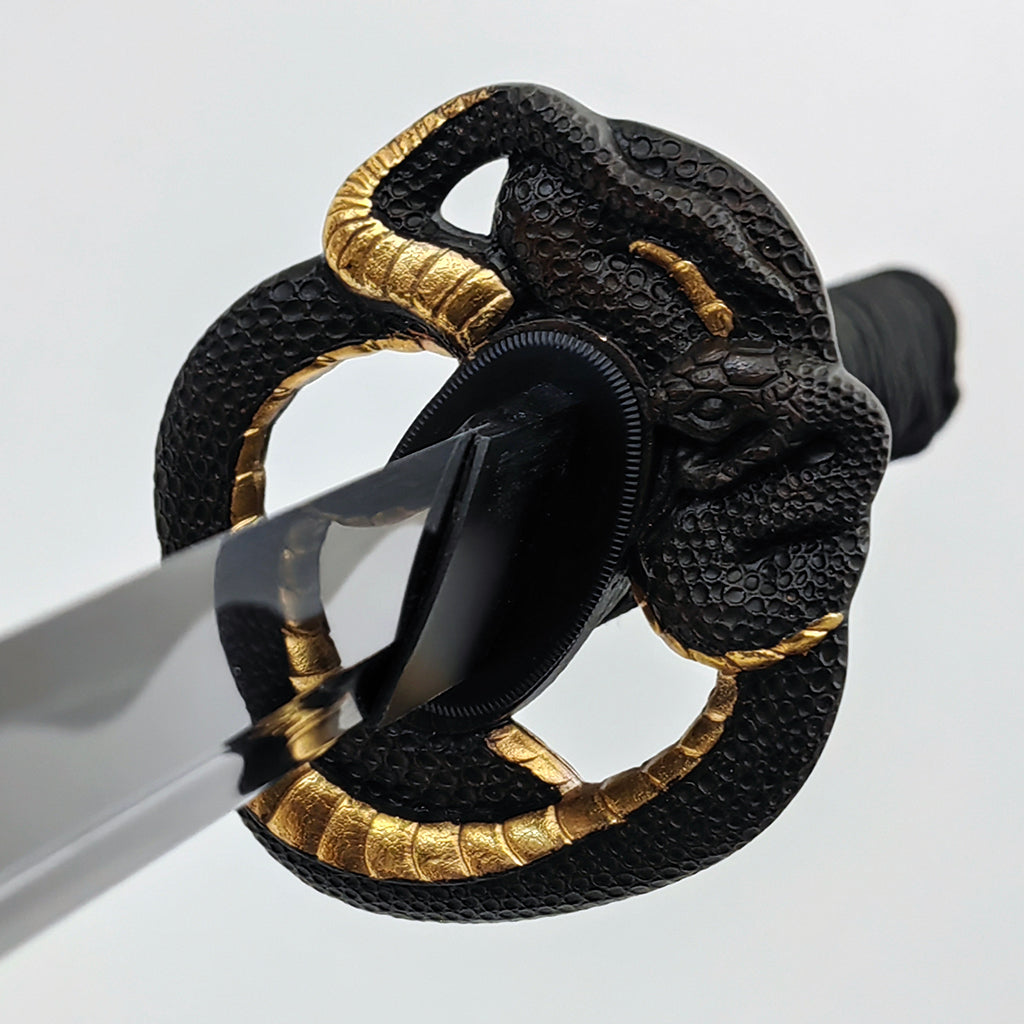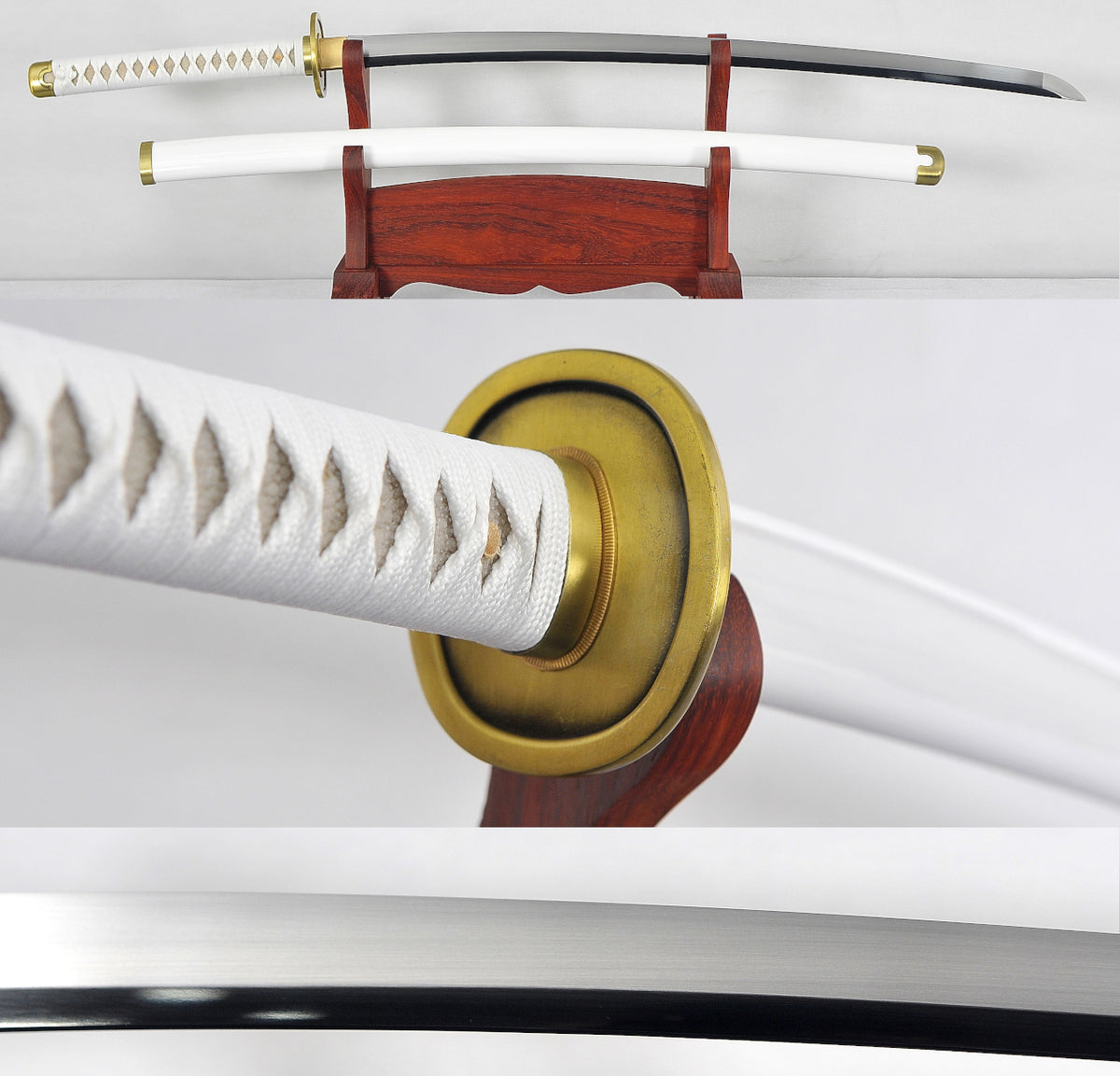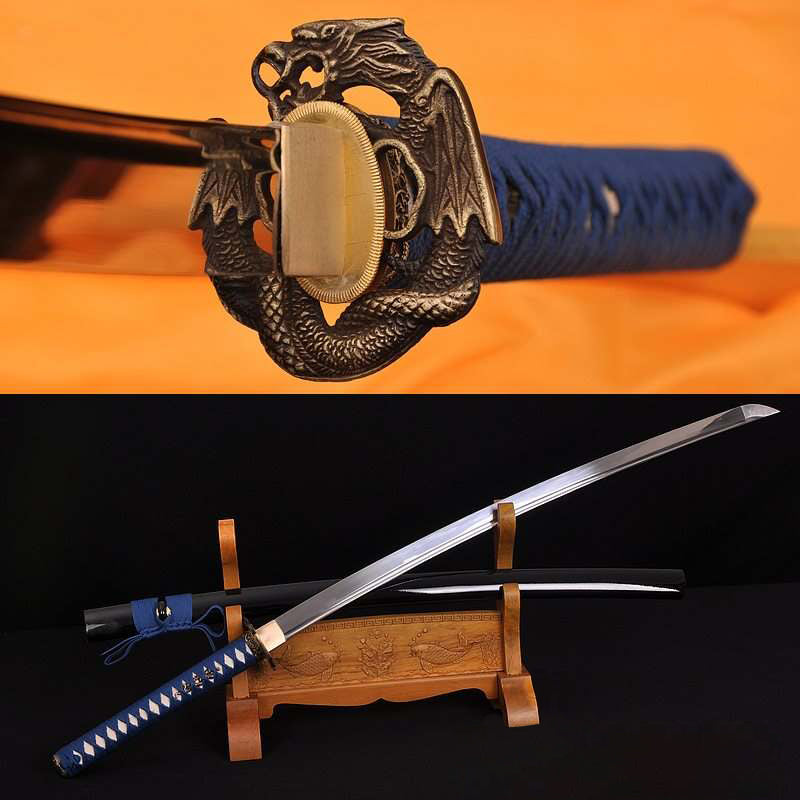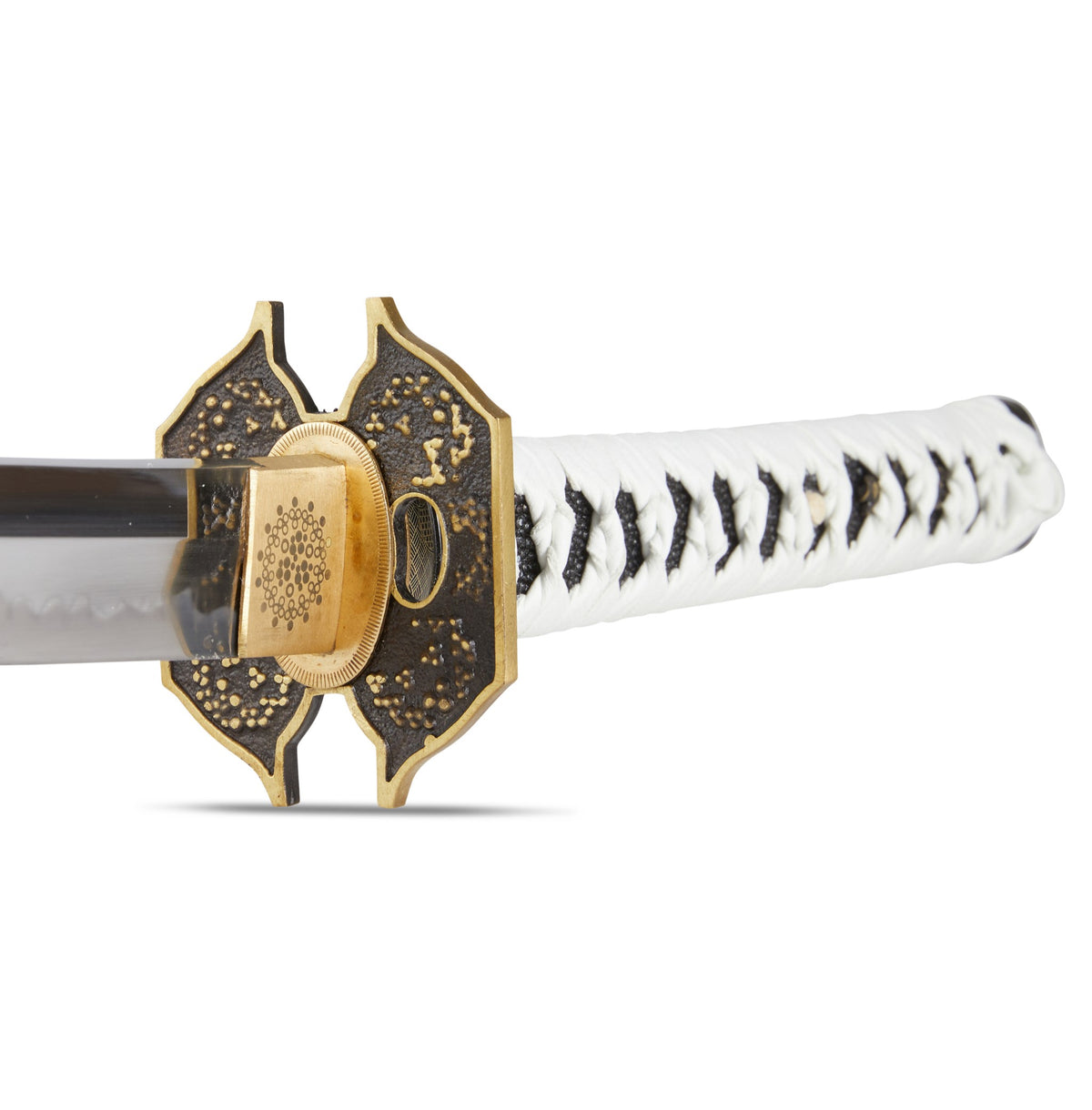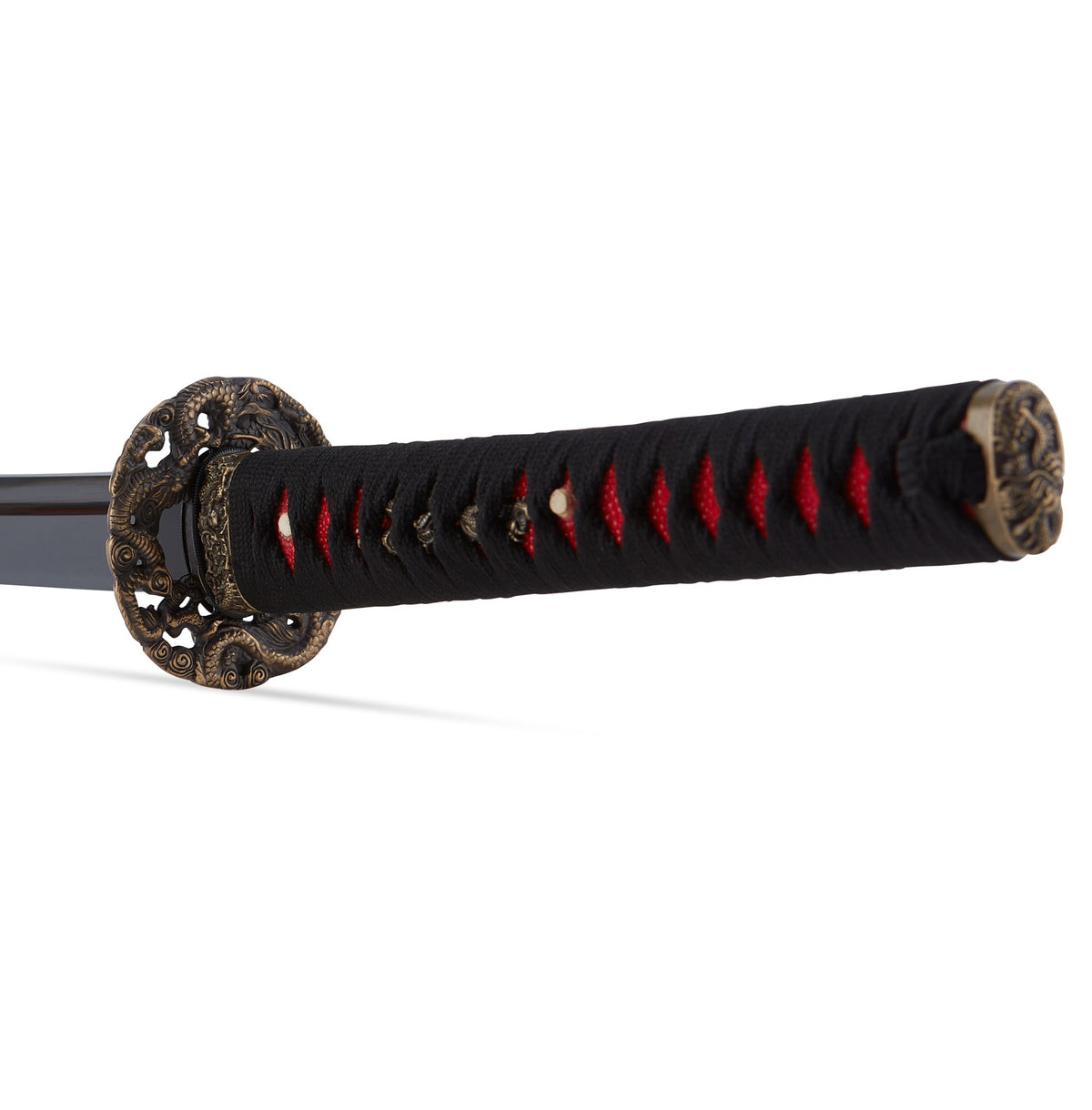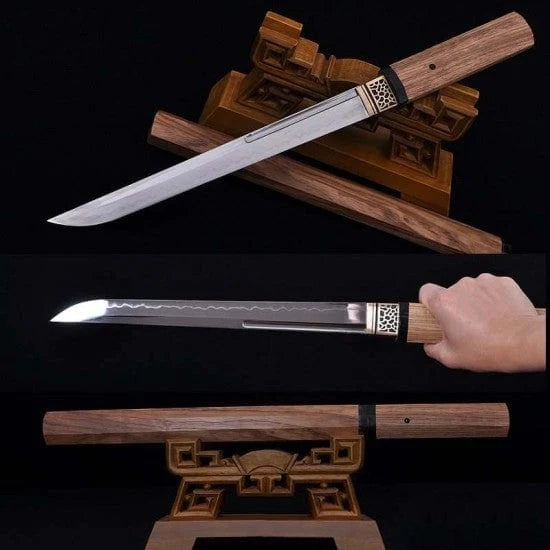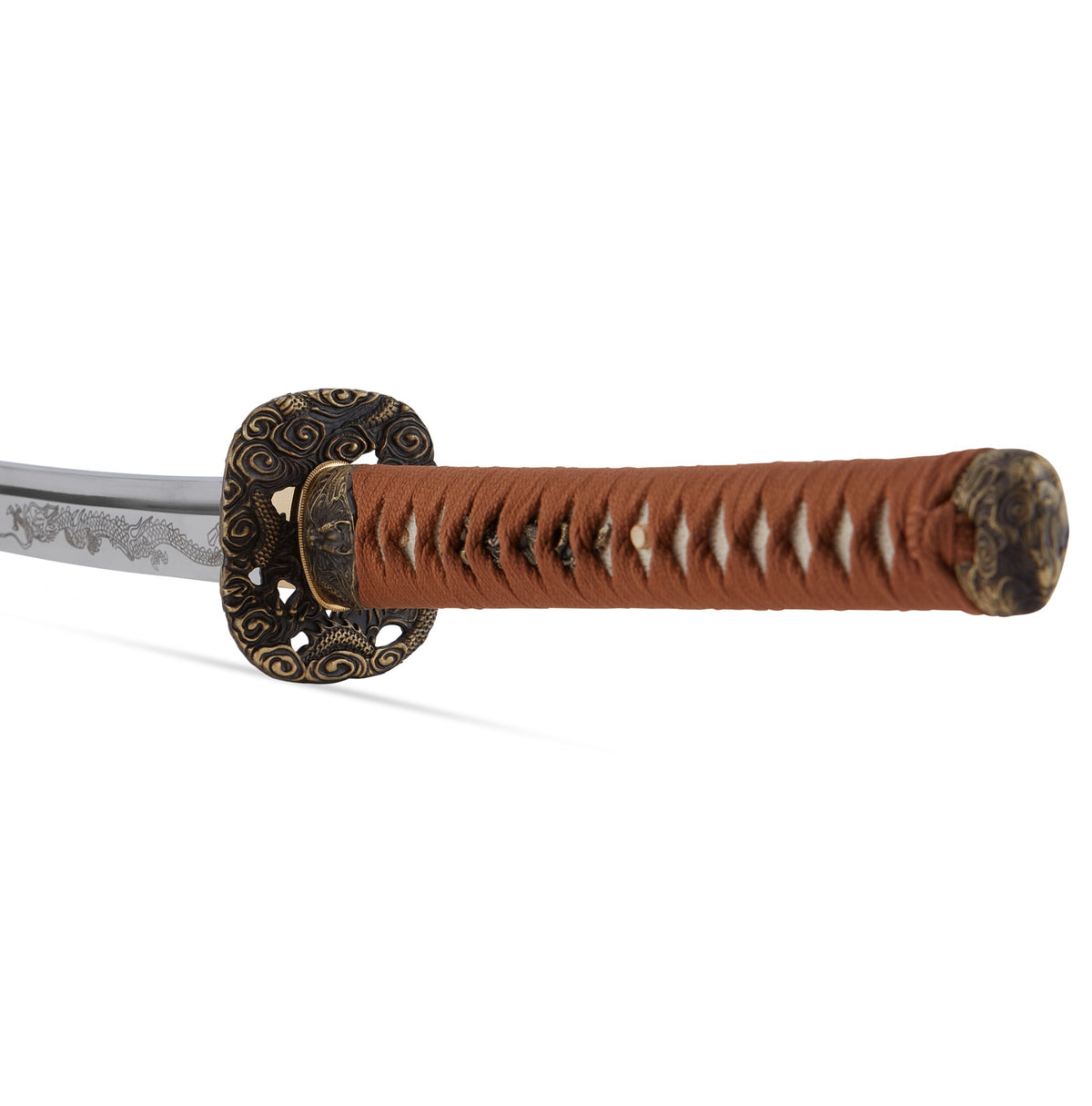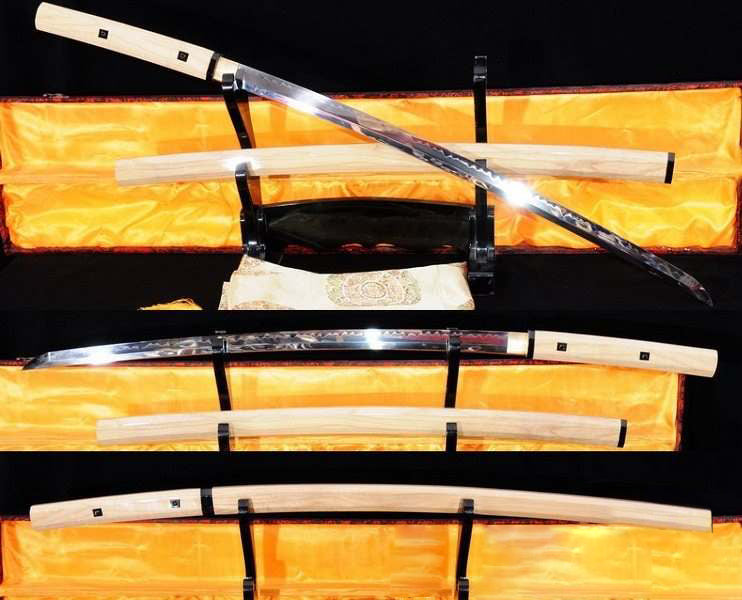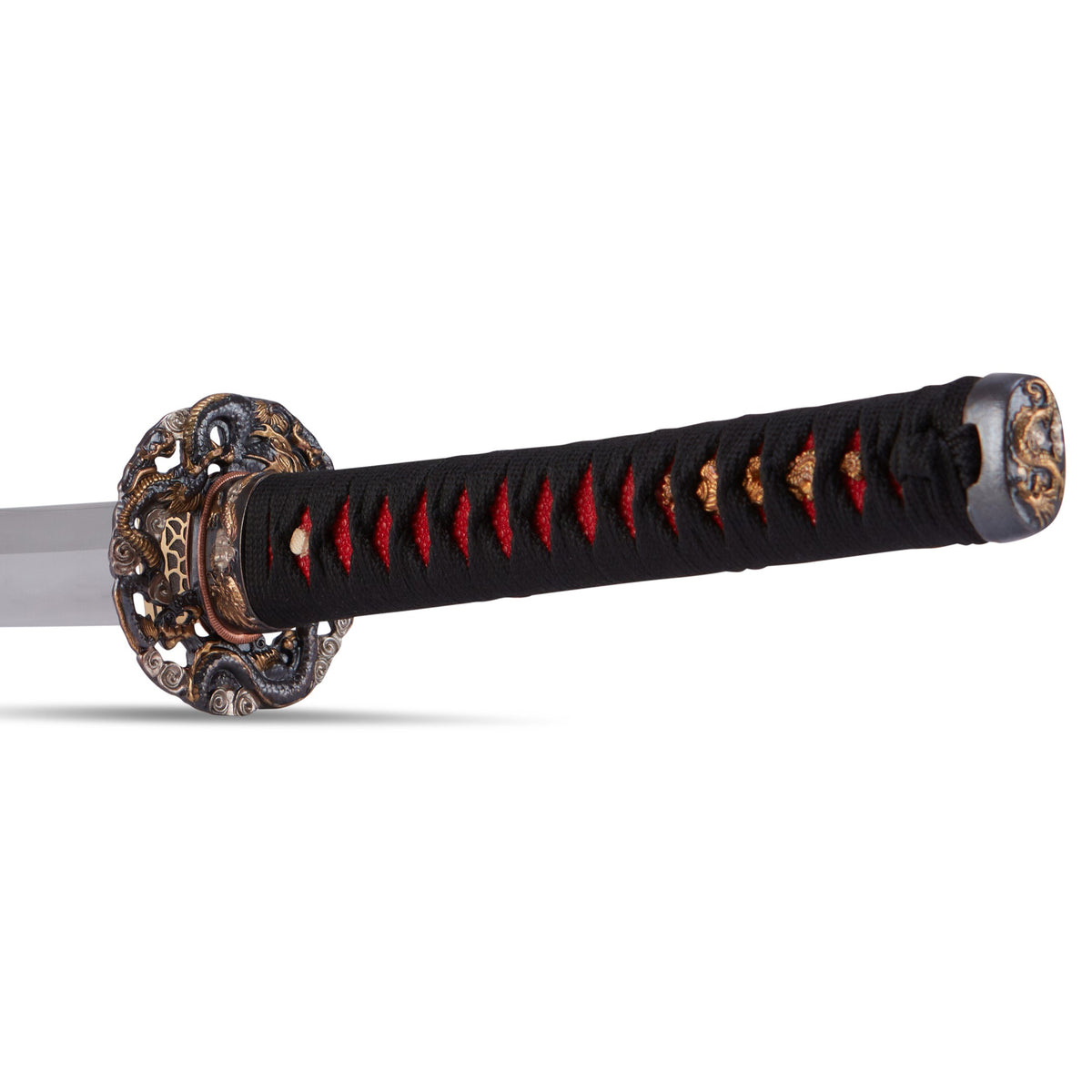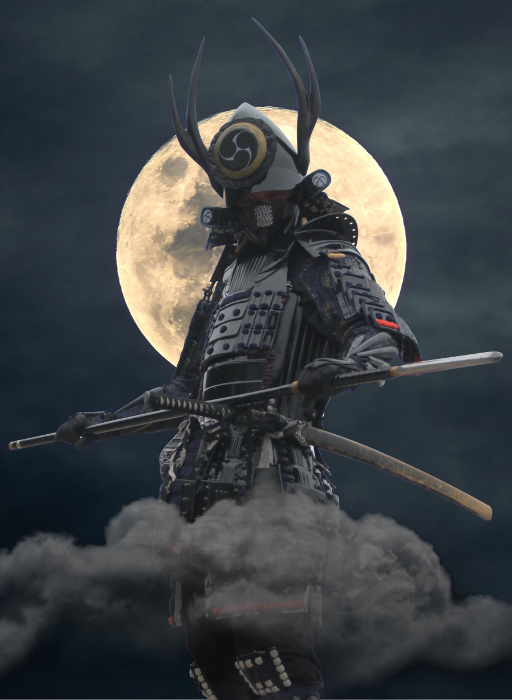Anatomy of a Longsword (from Dimensions to Parts)

The longsword is a well-known European weapon that was popular between the 13th and 17th centuries. Used by late medieval knights, as well as Renaissance noblemen, the longsword’s reign as a primary weapon spanned centuries. If you’re interested in learning more about the parts of a longsword, longsword dimensions, and longsword fighting techniques, read on.
Longsword Overview
You can recognize a longsword immediately from the way it looks. It has a cruciform hilt that’s made for a two-handed grip and a double-edged blade. Most longsword dimensions range between 116 and 150cm, with the blade length measuring between 100 to 122cm. These are the perfect melee weapons thanks to their reach and lighter weight.
Blade Profile
We’ve already mentioned that longswords had both a straight and double-edged blade, but over time, they became longer and thicker in the cross-section. By the end of their evolution, the blade was much narrower and far more pointed than the original shape. Historians attribute this change to the use of plate armor during battle, which made long, thrusting weapons that could slide between the plates more useful than a slashing sword trying to break through the armor. A rigid blade with a more acute point was the most effective weapon against an opponent in heavy armor.
Blade Cross-Sections
There were two basic cross-section styles for longsword blades: diamond and lenticular. A diamond cross-section shapes a blade so that it slopes up from the edges and creates a central ridge called a riser. Diamond cross-section blades ensured increased rigidity, which was ideal for thrusting past heavy armor. Lenticular blades were a little different, shaped like thin convex lenses. They were thick enough in the center to ensure a strong blade but still allowed for a sharp cutting edge.
Some of the other cross-section styles included hollow ground, hexagonal, thickened diamond – all based on the original diamond cross-section, as well as fuller, double fuller, and broad fuller – based on the lenticular cross-section style.
Hilts

The final part of a longsword is the hilt or handle. This piece typically measures between 16 to 22cm in length. There are several different varieties of hilt styles because the longsword was a staple for so long. As fighting techniques and blade properties evolved, so did the hilt. But fashion trends also had an effect on the materials, accents, and shape of the pommel, grip, and crossguard.
The Final Longsword Dimension: Weight
Depending on the exact size and materials for the blade, hilt, and other longsword dimensions, most swords weighed between 1 and 1.5kg – very similar to the weight of a katana.
Are you curious about the comparison between the anatomy of a katana and the parts of a longsword? Explore our blog to find more information about Japanese and European weapons today!
Best Sellers
- Regular Price
- from $199.99
- Sale Price
- from $199.99
- Regular Price
-
- Unit Price
- per
- Regular Price
- from $299.00
- Sale Price
- from $299.00
- Regular Price
-
- Unit Price
- per
- Regular Price
- from $199.00
- Sale Price
- from $199.00
- Regular Price
-
$0.00
- Unit Price
- per
- Regular Price
- from $619.00
- Sale Price
- from $619.00
- Regular Price
-
- Unit Price
- per
- Regular Price
- from $319.00
- Sale Price
- from $319.00
- Regular Price
-
- Unit Price
- per
- Regular Price
- from $249.00
- Sale Price
- from $249.00
- Regular Price
-
- Unit Price
- per
- Regular Price
- from $339.00
- Sale Price
- from $339.00
- Regular Price
-
- Unit Price
- per
- Regular Price
- from $219.00
- Sale Price
- from $219.00
- Regular Price
-
- Unit Price
- per
- Regular Price
- from $364.00
- Sale Price
- from $364.00
- Regular Price
-
- Unit Price
- per
- Regular Price
- from $519.00
- Sale Price
- from $519.00
- Regular Price
-
- Unit Price
- per
